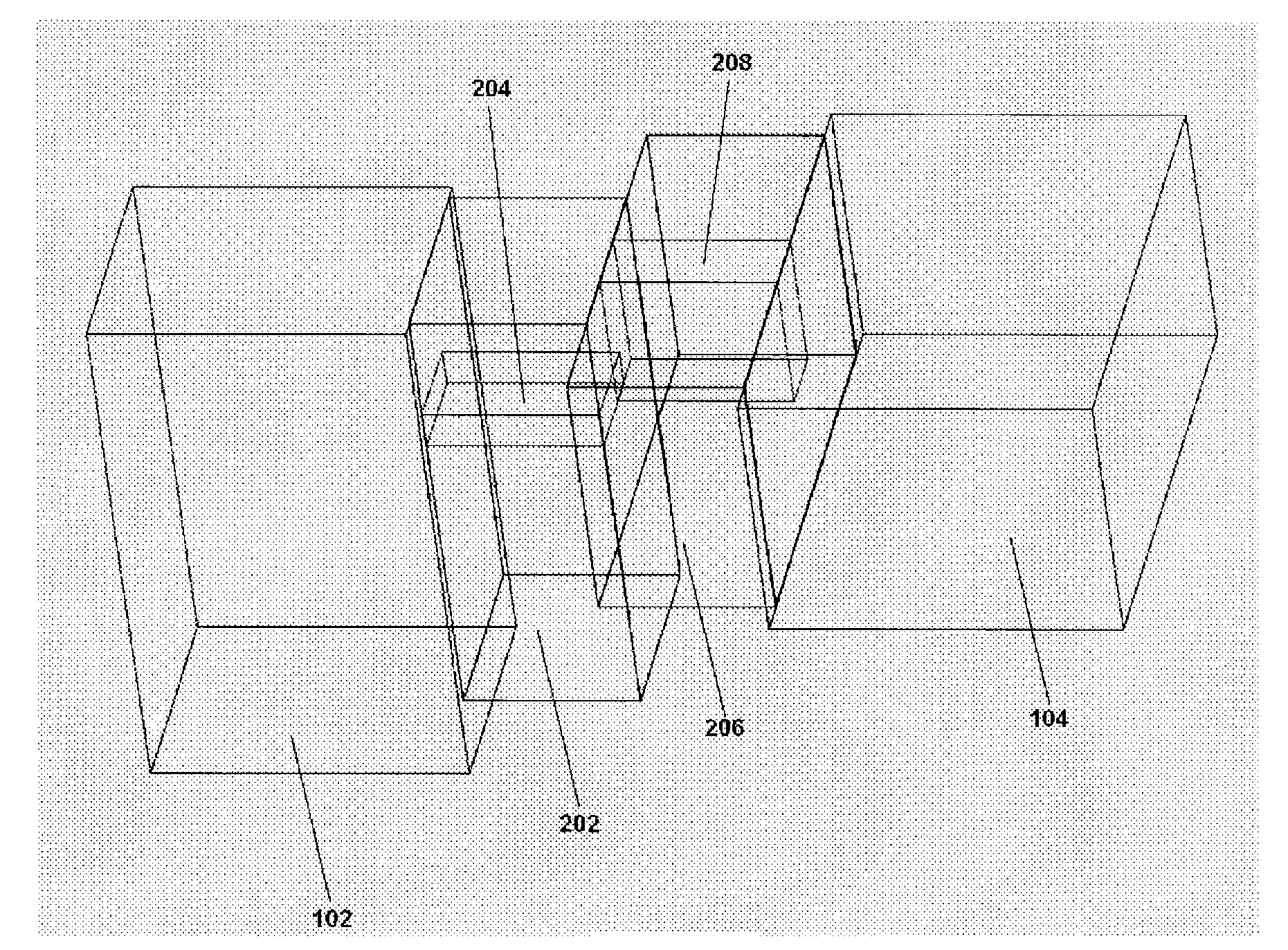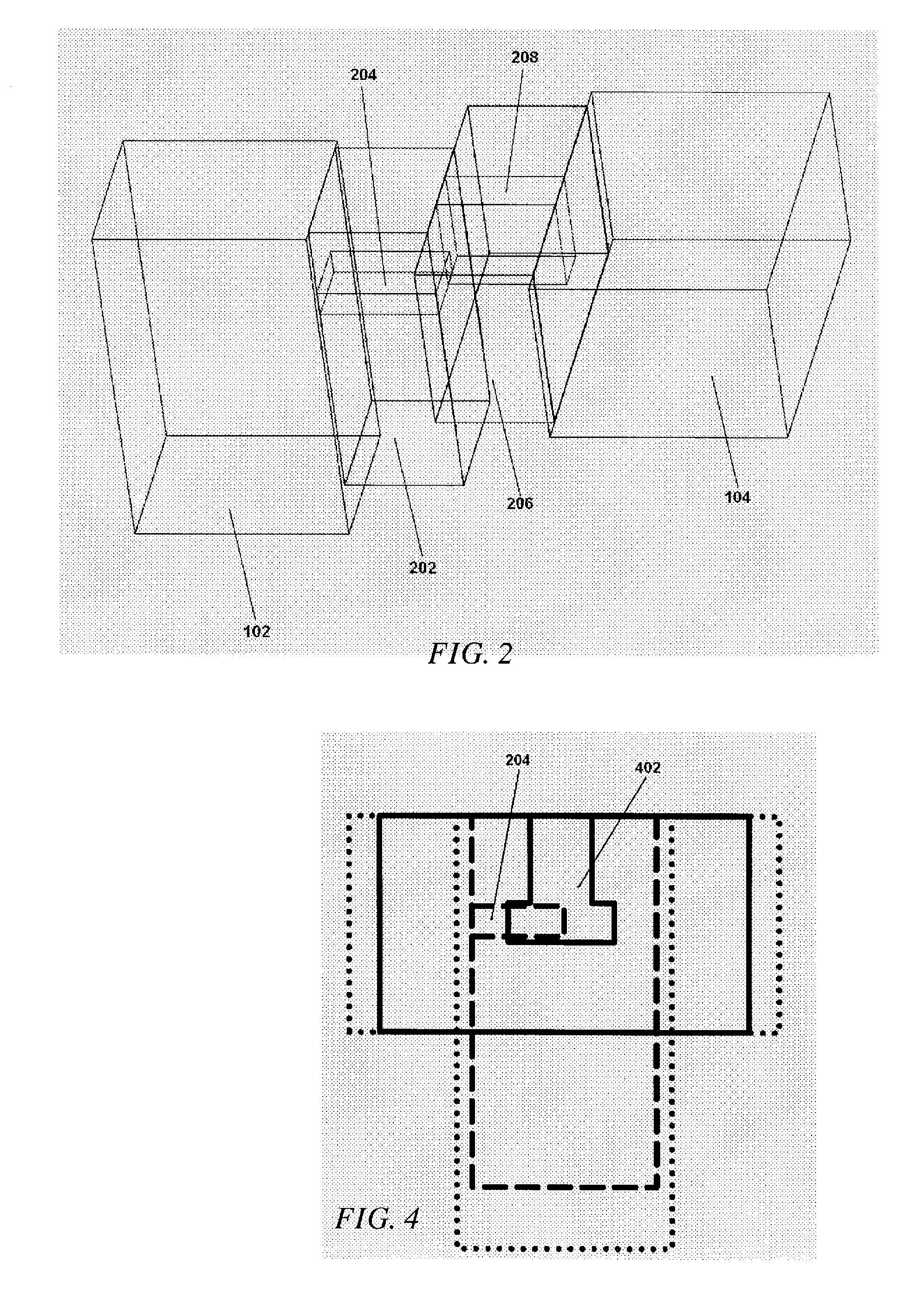T-shape waveguide twist-transformer
a waveguide and transformer technology, applied in the field of waveguide junctions, can solve the problems of increasing manufacturing effort and expense, complex manufacturing of such junctions, and substantial limitations of achievable performance, and achieve the effects of convenient manufacturing, high performance properties, and compact siz
- Summary
- Abstract
- Description
- Claims
- Application Information
AI Technical Summary
Benefits of technology
Problems solved by technology
Method used
Image
Examples
Embodiment Construction
[0023]With reference to FIG. 1 and FIGS. 3A-3B, a junction for connecting two waveguides is presented. For the sake of clarity the drawings present the invention in a very schematic way with elements and lines not essential for understanding the invention omitted.
[0024]The principle of the invention is depicted in FIG. 1, where a 90° waveguide junction of a T-shape configuration is schematically illustrated by means of cross-sections of a first waveguide 101 and a second waveguide 103. With reference to FIG. 2 a first rectangular waveguide 101 (not shown in FIG. 2) is connected, via a first interface 102, to a first transformer section 202 of the junction. The first transformer section 202 has the same orientation as the first waveguide 101 (i.e., there is no angular offset). Similarly a second rectangular waveguide 103 (not shown in FIG. 2) is connected, via a second interface 104, to a second transformer section 206 of the junction, which has the same orientation as the second wav...
PUM
 Login to View More
Login to View More Abstract
Description
Claims
Application Information
 Login to View More
Login to View More - R&D
- Intellectual Property
- Life Sciences
- Materials
- Tech Scout
- Unparalleled Data Quality
- Higher Quality Content
- 60% Fewer Hallucinations
Browse by: Latest US Patents, China's latest patents, Technical Efficacy Thesaurus, Application Domain, Technology Topic, Popular Technical Reports.
© 2025 PatSnap. All rights reserved.Legal|Privacy policy|Modern Slavery Act Transparency Statement|Sitemap|About US| Contact US: help@patsnap.com



